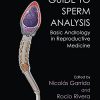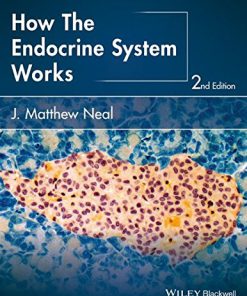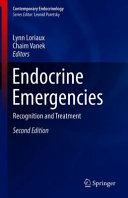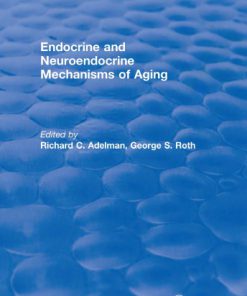Dopamine Endocrine and Oncogenic Functions 1st Edition by Nira Ben Jonathan 0429402279 9780429402272
$50.00 Original price was: $50.00.$25.00Current price is: $25.00.
Dopamine-Endocrine and Oncogenic Functions 1st Edition by Nira Ben-Jonathan – Ebook PDF Instant Download/DeliveryISBN: 0429402279, 9780429402272
Full download Dopamine-Endocrine and Oncogenic Functions 1st Edition after payment.
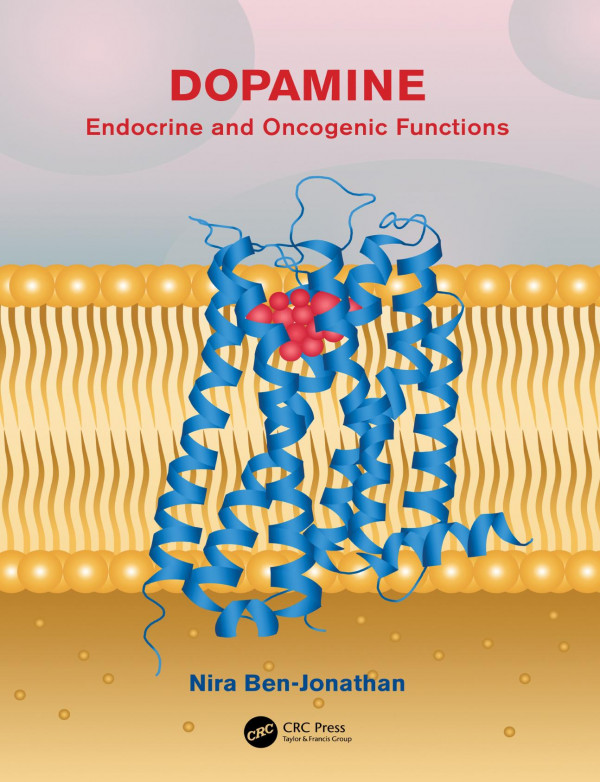
Product details:
ISBN-10 : 0429402279
ISBN-13 : 9780429402272
Author: Nira Ben-Jonathan
Dopamine is a small molecule traditionally regarded as a brain-derived neuronal modulator implicated in many neurological and psychiatric disorders. Outside the brain, dopamine fulfills all the criteria of a circulating hormone which affects normal and abnormal functions of multiple organs and regulatory systems and is also involved in many aspects of cancer formation and progression. This book provides a much needed systematic account of dopamine as an endocrine and autocrine/paracrine hormone and fills a major gap in the overall understanding of the production, distribution and actions of this very important molecule. Key Features: Explores the many different faces of dopamine as autocrine, paracrine and endocrine molecule Documents the adverse effects of antipsychotics on dopamine functions Reviews the many ways dopamine affects the cardiovascular, renal and reproductive systems Provides updates on receptor oligomerization and signaling Examines the role of dopamine in tumorigenesis Related Titles Jones, S. ed. Dopamine – Glutamate Interactions in the Basal Ganglia (ISBN 978-0-3673-8197-4) Luo, L. Principles of Neurobiology (ISBN 978-0-8153-4494-0) Sidhu, A. et al., eds. Dopamine Receptors and Transporters (ISBN 978-0-8247-0854-2)
Dopamine-Endocrine and Oncogenic Functions 1st table of contents:
Chapter 1 Homeostasis of Dopamine
1.1 Introduction
1.2 Biosynthetic Enzymes
1.2.1 Tyrosine hydroxylase
1.2.2 Dopa decarboxylase
1.2.3 Dopamine beta-hydroxylase and phenylethanolamine-N-methyltransferase
1.3 Metabolic Enzymes
1.3.1 Monoamine oxidases (MAOs)
1.3.2 Catechol-O-methyltransferase
1.3.3 Glucuronosyltransferases and sulfotransferases
1.4 Membrane and Vesicular Transporters
1.4.1 Transporters of monoamine neurotransmitters
1.4.2 The dopamine transporter
1.4.3 Pharmacology of DAT
1.4.4 DAT-deficient mice
1.4.5 Vesicular monoamine transporters
1.4.6 Organic cation transporters and plasma membrane monoamine transporters
1.5 Storage, Release, and Reuptake
1.5.1 Functional coupling between DA synthesis and storage
1.5.2 Characteristics of synaptic vs. secretory vesicles
1.5.3 Mechanism of exocytosis
References
Chapter 2 Dopamine Receptors, Signaling Pathways, and Drugs
2.1 Introduction
2.2 Dopamine Receptors: Structure–Function Relationship
2.2.1 Overview of G protein-coupled receptors (GPCR)
2.2.2 Structural and functional classification of the GPCRs
2.2.3 Coupling of the GPCRs to G proteins
2.2.4 General characteristics and regulation of the DARs
2.2.5 Specific properties and brain distribution of D1-like receptors
2.2.6 Specific properties and brain distribution of D2-like receptors
2.2.7 DAR oligomerization, desensitization, and constitutive activity
2.3 Canonical Versus Noncanonical Signaling by Dar Subtypes
2.3.1 The consequences of DAR coupling to G proteins
2.3.2 The adenylate cyclase/cAMP/PKA signaling pathway
2.3.3 Cross-talk of multiple signaling pathways
2.3.4 Role of the cGMP pathway
2.4 Dar Agonists and Antagonists
2.4.1 Overview of DAR-selective ligands
2.4.2 D2R-altering drugs
2.4.3 Atypical antipsychotics
2.4.4 Drug selectivity
2.4.5 Peripheral dopaminergic altering drugs
2.5 Dopamine Receptor Knockout Mice
2.5.1 Phenotypes of individual DAR-KO mice
2.5.2 D2R deletion and pituitary functions
2.6 Synopsis
References
Chapter 3 Distribution and Characteristics of Brain Dopamine
3.1 Introduction
3.2 Noradrenergic and Adrenergic Neurons
3.2.1 Historical perspectives
3.2.2 Distribution and major functions of the brain noradrenergic neurons
3.2.3 Distribution and major functions of the brain adrenergic neurons
3.3 Dopaminergic Neurons
3.3.1 Classification of the brain dopaminergic neurons
3.3.2 Mesocortical, mesolimbic, and nigrostriatal dopaminergic pathways
3.3.3 Retinal, olfactory, and pineal dopaminergic neurons
3.4 The Hypothalamus: Structure and Functions
3.4.1 Anatomy of the hypothalamus
3.4.2 The hypothalamic nuclei: Locations and major neuroendocrine functions
3.4.3 Catecholaminergic innervation of the hypothalamus
3.5 The Hypothalamo-Pituitary Complex: Neural and Vascular Connections
3.5.1 Functional anatomy of the hypothalamo-pituitary complex
3.5.2 Embryonic development and gross anatomy of the pituitary gland
3.5.3 The hypothalamo-pituitary complex: Neural connections and DA concentrations
3.5.4 The hypothalamo-pituitary complex: Vascular connections and DA levels in portal blood
3.6 Synopsis
References
Chapter 4 Endocrine Functions of Brain Dopamine
4.1 Introduction
4.2 Circadian Rhythms
4.2.1 Circadian rhythms and their impact on health and disease
4.2.2 The neurocircuitry that controls circadian rhythms and the role of dopamine
4.2.3 Dopamine and retinal rhythmicity
4.2.4 Dopamine and the suprachiasmatic nucleus
4.2.5 Effects of DA on the pineal: Regulation of melatonin synthesis and release
4.2.6 Effects of dopamine on the circadian rhythms of circulating hormones
4.3 The Neuroendocrine Stress Response
4.3.1 Time-related, multi-facetted activation of the stress response
4.3.2 Central dopamine and the stress response: Interactions with the HPA axis
4.3.3 Circulating dopamine and the stress response
4.3.4 Dopamine and the stress response: Interactions with sexually dimorphic hormones
4.4 Food Intake and Metabolic Homeostasis
4.4.1 Control of body weight and the consequences of dysregulation of food intake
4.4.2 The hypothalamus: A major relay station that controls feeding behavior
4.4.3 Leptin, a major suppressor of appetite
4.4.4 Pancreatic hormones: Insulin and amylin
4.4.5 Gastrointestinal hormones involved in the regulation of food intake
4.4.6 Involvement of dopamine in the control of feeding behavior
4.5 Neuroendocrine Regulation of Reproduction and Sexual/Maternal Behavior
4.5.1 Synthesis of GnRH, origin and migration of GnRH neurons, and genetic dysfunctions
4.5.2 Kisspeptins, GnRH pulsatility, and the role of dopamine
4.5.3 Reproductive functions of PRL and reciprocal interactions with dopamine
4.5.4 Hyperprolactinemia and the suppression of GnRH release
4.5.5 Regulation of sexual and maternal behavior
4.6 Synopsis
References
Chapter 5 Regulation of the Pituitary Gland by Dopamine
5.1 Introduction
5.2 Neural Lobe Hormones: Vasopressin and Oxytocin
5.2.1 Ontogeny and composition of the posterior pituitary (neurointermediate lobe)
5.2.2 Synthesis, transport, and processing of the neurohypophysial hormones
5.2.3 Vasopressin: Receptors, functions, and regulation
5.2.4 Oxytocin: Receptors, physiology, and regulation
5.2.5 Effects of dopamine on the neurohypophysial hormones
5.3 Intermediate Lobe Hormones: β- Endorphin and α-MSH
5.3.1 Structure, innervation and regulation of the intermediate lobe
5.3.2 Synthesis and processing of POMC and its derivatives
5.3.3 Regulation of intermediate lobe hormones by dopamine
5.4 Composition and Ontogeny of the Anterior Pituitary
5.4.1 Anterior pituitary structure, cell types, and dopamine receptors
5.4.2 Ontogeny of anterior pituitary cell lineage
5.5 Somatolactogenic Hormones: PRL and GH
5.5.1 Structure and properties of somatotrophs and lactotrophs
5.5.2 PRL: Structure, synthesis, regulation, and functions
5.5.3 GH: Structure, synthesis, and regulation
5.6 Reproductive Hormones: LH and FSH
5.6.1 The gonadotrophs: Structure, properties, and secretory products
5.6.2 GnRH and the GnRH receptor
5.6.3 FSH: Structure, synthesis, regulation and functions
5.6.4 LH: Structure, synthesis, regulation, and functions
5.6.5 Regulation of the hypothalamo-pituitary-gonadal axis by dopamine
5.7 Stress and Metabolic Hormones: ACTH and TSH
5.7.1 Corticotrophs and ACTH
5.7.2 Major disorders associated with dysfunctions of the HPA axis
5.7.3 Involvement of dopamine in the regulation of the HPA axis
5.7.4 Thyrotrophs and TSH
5.7.5 Disorders of the hypothalamo-pituitary-thyroid axis
5.7.6 Involvement of dopamine in the regulation of the HPT axis
5.8 Synopsis
References
Chapter 6 Attributes of Peripheral Dopamine and Dopamine Receptors
6.1 Introduction
6.2 Sources of Circulating Dopamine
6.2.1 Biosynthesis, storage, release, and metabolism of peripheral catecholamines
6.2.2 The origin of circulating dopamine
6.2.3 Special characteristics of peripheral dopamine
6.3 Unique Characteristics of Dopamine Sulfate
6.3.1 Sulfoconjugation of peripheral dopamine
6.3.2 Functions of DA-S and the role of arylsulfatase A
6.4 Dopamine Receptors in the Cardiovascular, Pulmonary, and Renal Systems
6.4.1 The cardiovascular and renal systems
6.4.2 The respiratory system
6.5 Dopamine Receptors in the Digestive System and in Organs that Regulate Metabolism
6.5.1 The digestive system
6.5.2 Metabolic regulation
6.6 Dopamine Receptors in Hematopoietic and Immune Systems
6.6.1 Dopamine receptors in lymphoid organs
6.6.2 Dopamine receptors in peripheral blood lymphocytes
6.7 Dopamine Receptors in Skin and Bones
6.7.1 Skin structure
6.7.2 Dopamine receptors in different skin components
6.7.3 Bone structure
6.7.4 Dopamine receptors in bone cells
6.8 Dopamine Receptors in Male and Female Reproductive Systems
6.8.1 Overall features of the reproductive system
6.8.2 The male lower reproductive system
6.8.3 The female reproductive system
6.9 Synopsis
References
Chapter 7 Renal, Cardiovascular, and Pulmonary Functions of Dopamine
7.1 Introduction
7.2 Renal Fluid Hemodynamics and Hypertension
7.2.1 Kidney development and gross anatomy
7.2.2 The nephron: Structure–function relationship
7.2.3 Urine formation and composition
7.2.4 Endocrine regulation of blood pressure by the kidney
7.2.5 Dopamine: Roles in essential hypertension and renal hemodynamics
7.3 Renal Natriuresis, Oxidative Stress, and Diabetic Nephropathy
7.3.1 Central role of the kidney in keeping electrolyte balance and osmolarity
7.3.2 Endocrine regulation of natriuresis by the kidney
7.3.3 Involvement of dopamine with natriuresis
7.3.4 Renal dopamine and oxidative stress
7.3.5 Dopamine and diabetic nephropathy
7.4 Cardiac Functions
7.4.1 Homeostasis of dopamine in the myocardium
7.4.2 Actions of DA on the heart under pathophysiological conditions
7.5 Blood Pressure Regulation in Various Vascular Beds
7.5.1 Effects of DA on various circulation systems
7.5.2 Dopamine and angiogenesis
7.6 Respiration and Oxygen-Sensing
7.6.1 Dopamine homeostasis in the upper respiratory tract
7.6.2 Dopamine involvement in upper airway pathophysiology
7.6.3 Dopamine and carotid body functions
7.7 Pulmonary Ventilation and Pathophysiology
7.7.1 De novo dopamine synthesis in the lung
7.7.2 Actions of dopamine in the lung
7.8 Synopsis
References
Chapter 8 Digestive and Metabolic Actions of Dopamine
8.1 Introduction
8.2 Gastrointestinal System: Motility
8.2.1 Pharynx and esophagus
8.2.2 Stomach and duodenum
8.2.3 Small and large intestine
8.3 Gastrointestinal System: Digestive Functions
8.3.1 Salivary glands
8.3.2 The stomach
8.3.3 Accessory digestive organs: Exocrine pancreas and gall bladder
8.3.4 Small and large intestines
8.3.5 Enteric dopaminergic system and the gut microbiome
8.4 Organs that Regulate Metabolism: Pancreas, Adipose Tissue, and Liver
8.4.1 Endocrine pancreas and glucose metabolism
8.4.2 Adipose tissue
8.4.3 The liver
8.5 Diabetes, Obesity, and Adverse Effects of Antipsychotic Drugs
8.5.1 Dopamine, diabetes, and obesity
8.5.2 Adverse effects of antipsychotic medication on body weight and metabolic syndrome
8.6 Synopsis
References
Chapter 9 Dopamine in the Immune and Hematopoietic Systems
9.1 Introduction
9.2 Cells derived from the Lymphoid Lineage
9.2.1 T cells, B cells, and NK cells
9.2.2 The dopaminergic system in lymphocytes and NK cells
9.3 Cells derived from the Myeloid Lineage
9.3.1 The dopaminergic system in erythrocytes and platelets
9.3.2 The dopaminergic system in various leucocyte subtypes
9.4 Autoimmune Diseases and Neuropsychiatric Disorders
9.4.1 Dopamine and autoimmune diseases
9.4.2 Dopamine, immune system, and neurological disorders
9.4.3 Dopamine, immune system, and psychiatric disorders
9.5 Endothelial Cells, Angiogenesis, and Coagulation
9.5.1 Endothelial cells and dopamine
9.5.2 Angiogenesis and dopamine
9.5.3 Blood clotting and the coagulation cascade
9.6 Inflammation and Allergic Reactions
9.6.1 Inflammation and dopamine
9.7 Synopsis
References
Chapter 10 Regulation of Reproduction by Dopamine
10.1 Introduction
10.2 Sex Determination and Sexual Differentiation of the Brain
10.2.1 Genetic and hormonal components of sexual determination and differentiation
10.2.2 Temporal and spatial developmental stages of sexual differentiation in the brain
10.2.3 Interference of the sexual differentiation program by endocrine disruptors
10.2.4 Association of dopamine with sexual differentiation in the brain
10.2.5 Gender identity and sexual preference
10.3 Hypothalamo–Pituitary Regulation of Reproduction in Both Sexes
10.3.1 Common features of the central control of reproduction
10.3.2 Involvement of dopamine in hypothalamic control of reproduction and sex behavior
10.3.3 Involvement of dopamine in the control of reproduction by the pituitary
10.3.4 Dopamine indirectly regulates reproductive functions through the control of prolactin
10.4 Male Reproduction: Testes and the Genital Tract
10.4.1 The male gonads: Spermatogenesis
10.4.2 The male gonads: Steroidogenesis and protein hormone production
10.4.3 Involvement of dopamine with testicular functions
10.4.4 The male genital tract
10.5 Female Reproduction: Ovaries and Genital Tract
10.5.1 Unique characteristics of female reproduction
10.5.2 The female gonads: Oogenesis, folliculogenesis, and ovulation
10.5.3 The female gonads: Steroidogenesis
10.5.4 Involvement of dopamine with ovarian functions
10.5.5 The female genital tract
10.6 Fertilization, Pregnancy, and Fetal Development
10.6.1 Overview of conception, pregnancy, and embryonic development
10.6.2 Fertilization
10.6.3 Blastocyst transport and implantation
10.6.4 Endocrine functions of the placenta
10.6.5 L-Dopa and dopamine levels in different compartments of pregnancy
10.6.6 Development of the fetal reproductive organs
10.7 Parturition and Lactation
10.7.1 The process of parturition
10.7.2 Hormonal regulation of lactation
10.8 Neonatal Development, Puberty, and Aging
10.8.1 The reproductive axis during the neonatal and prepubertal periods
10.8.2 Hormonal control of puberty and disorders of puberty
10.8.3 Aging of the reproductive system
10.9 Synopsis
References
Chapter 11 Actions of Dopamine on the Skin and the Skeleton
11.1 Introduction
11.2 Skin Structure and Wound Healing
11.2.1 Overview of skin structure
11.2.2 The complexity of wound healing
11.2.3 Role of dopamine in wound healing
11.2.4 Polydopamine nanopolymers used for drug delivery in wound healing
11.3 Pigmentation and Melanogenesis
11.3.1 Overview of skin pigmentation and melanogenesis
11.3.2 Selected disorders of pigmentation
11.3.3 Role of dopamine in skin pigmentation and its disorders
11.4 Sweating
11.4.1 Overview of sweating, apocrine, and eccrine glands
11.4.2 Dopamine and sweating
11.5 Hair Growth
11.5.1 Overview of hair growth and its hormonal regulation
11.5.2 Role of dopamine in hair growth
11.6 The Skeleton and Bone Remodeling
11.6.1 Overview of the skeleton and bone remodeling
11.6.2 Involvement of dopamine in bone homeostasis
11.7 Joints, Bones, and Muscles
11.7.1 Overview of joints and muscles
11.7.2 Involvement of dopamine in muscle disorders
11.7.3 Involvement of dopamine in bone and synovial joint disorders
11.8 Synopsis
References
Chapter 12 Dopamine and Tumorigenesis in Reproductive Tissues
12.1 Introduction
12.2 Pituitary Tumors
12.2.1 Prevalence, classification, and molecular characterization of pituitary tumors
12.2.2 Prolactinomas and dopamine: Pathogenesis and treatments
12.2.3 Dopamine and other pituitary adenomas subtypes
12.3 Breast Cancer
12.3.1 Prevalence, classification, and molecular characterization of breast cancer
12.3.2 Chemotherapy and immunotherapy in breast cancer
12.3.3 Hormone and targeted therapies in breast cancer
12.3.4 DARPP: A dopamine-regulated phosphatase involved in tumorigenesis
12.3.5 D1R expression and actions in breast cancer
12.4 Ovarian Cancer
12.4.1 Characteristics of ovarian cancer
12.4.2 Involvement of dopamine in ovarian cancer
12.5 Endometrial and Cervical Cancer
12.6 Prostate and Testicular Cancer
12.6.1 Characteristics of prostate cancer
12.6.2 Role of dopamine in prostate cancer
12.6.3 Testicular cancer
12.7 Synopsis
References
Chapter 13 Involvement of Dopamine with Various Cancers
13.1 Introduction
13.2 Hematological Malignancies
13.2.1 Prevalence and classification of hematological malignancies
13.2.2 Attributes and classification of leukemias
13.2.3 Involvement of dopamine in leukemias
13.2.4 Association of dopamine with lymphomas
13.3 Gastrointestinal-Related Cancers
13.3.1 Dopamine and overall incidence of GI malignancies
13.3.2 Gastric cancer
13.3.3 Colorectal cancer
13.3.4 Liver cancer
13.3.5 Pancreatic cancer
13.4 Lung, Kidney, and Bladder Cancers
13.4.1 Lung cancer and dopamine
13.4.2 Kidney and bladder cancer
13.5 Cancers of the Skin
13.5.1 Prevalence and attributes of skin cancer
13.5.2 Dopamine and melanoma
13.6 Head and Neck Cancer
13.6.1 Prevalence and attributes of head and neck cancer
13.6.2 Dopamine and DARPP-32 in head and neck and esophageal cancers
13.6.3 Role of the cGMP/PDE/PKG pathway in head and neck cancer
13.7 Neurological and Neuroendocrine Tumors
13.7.1 Dopamine in brain tumors: Glioblastoma and meningioma
13.7.2 Dopamine and neuroblastoma
13.7.3 Prevalence and attributes of neuroendocrine tumors
13.7.4 Dopamine in neuroendocrine tumors
13.8 Synopsis
People also search for Dopamine-Endocrine and Oncogenic Functions 1st:
endocrine function of dopamine
endocannabinoid system and dopamine
oncogenic functions and therapeutic targeting of epha2 in cancer
function of dopamine and norepinephrine
function of dopamine as a neurotransmitter
Tags: Dopamine Endocrine, Oncogenic Functions, Nira Ben Jonathan, Dopamine
You may also like…
Science (General)
Tumors and cancers : endocrine glands – blood – marrow – lymph 1st Edition Dongyou Liu
Mathematics Mathematics - Analysis
Biology and other natural sciences - Molecular
Oocytes. Maternal Information and Functions 1st Edition Kloc
Medicine - Endocrinology
Endocrine Emergencies Recognition and Treatment Lynn Loriaux And Chaim Vanek



